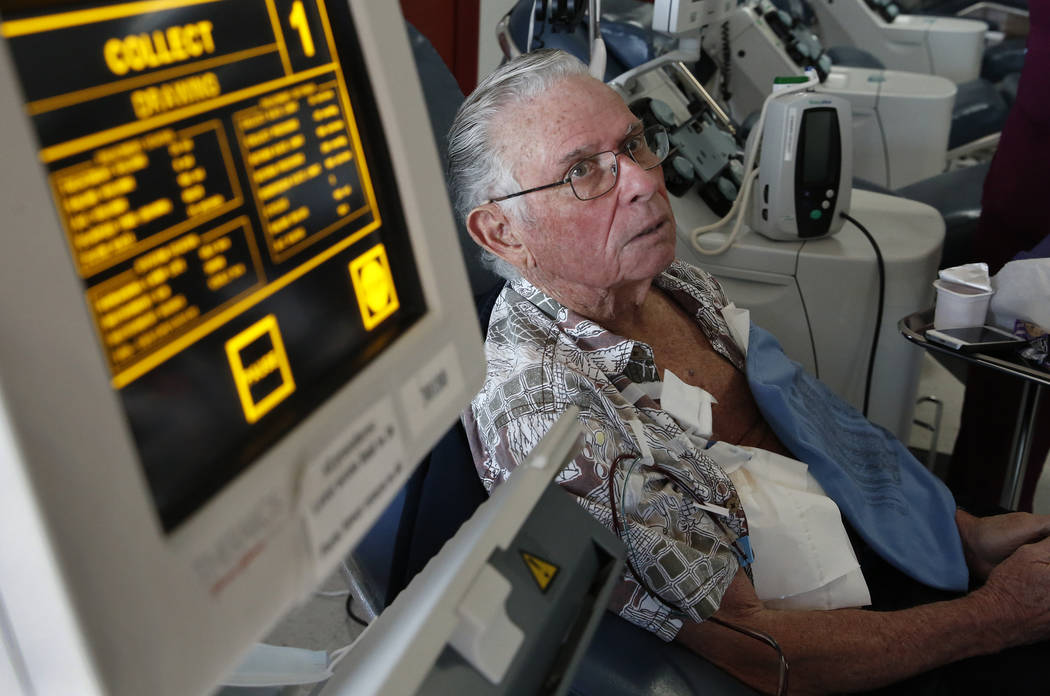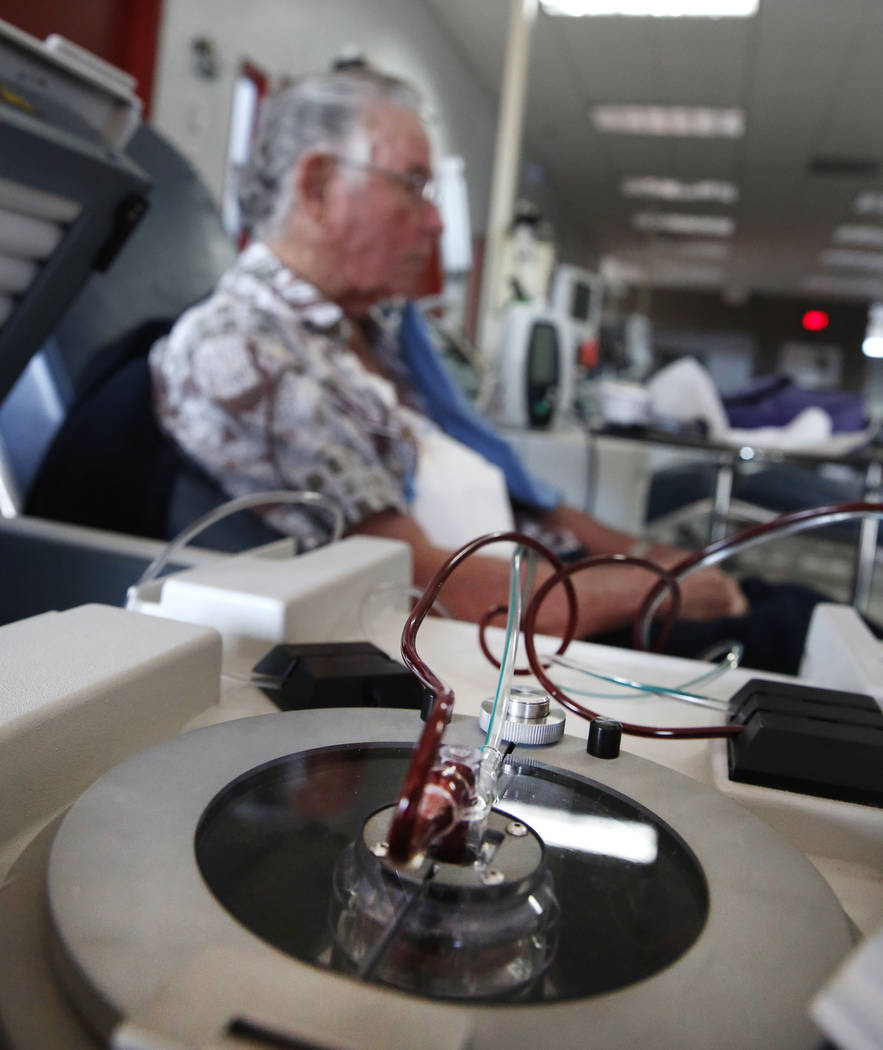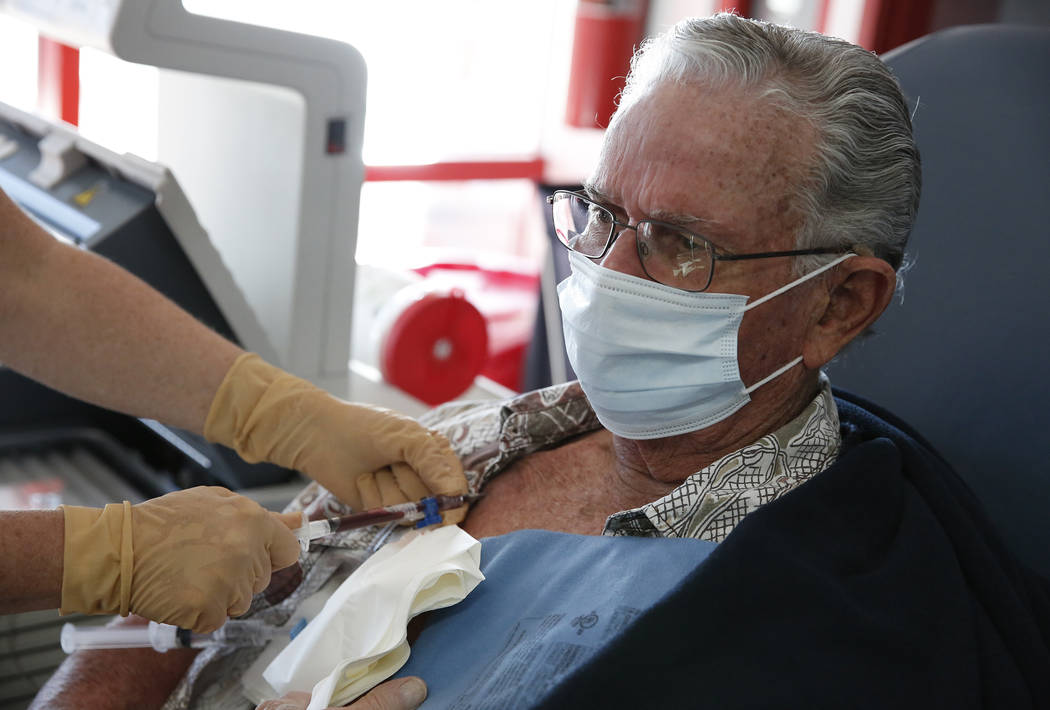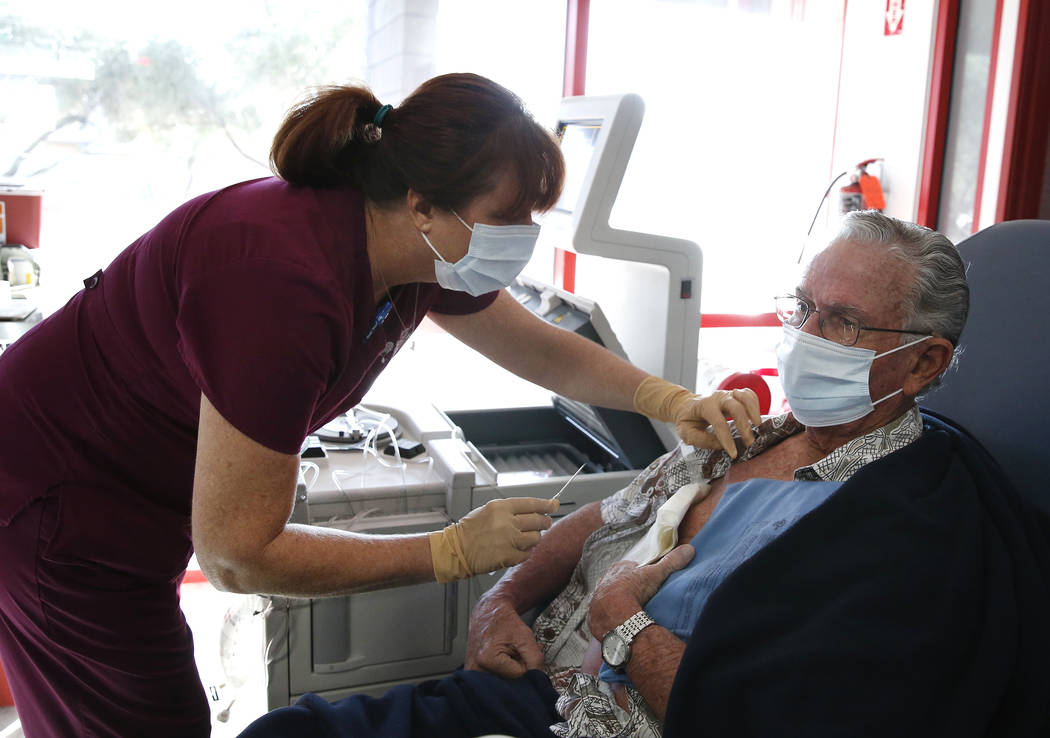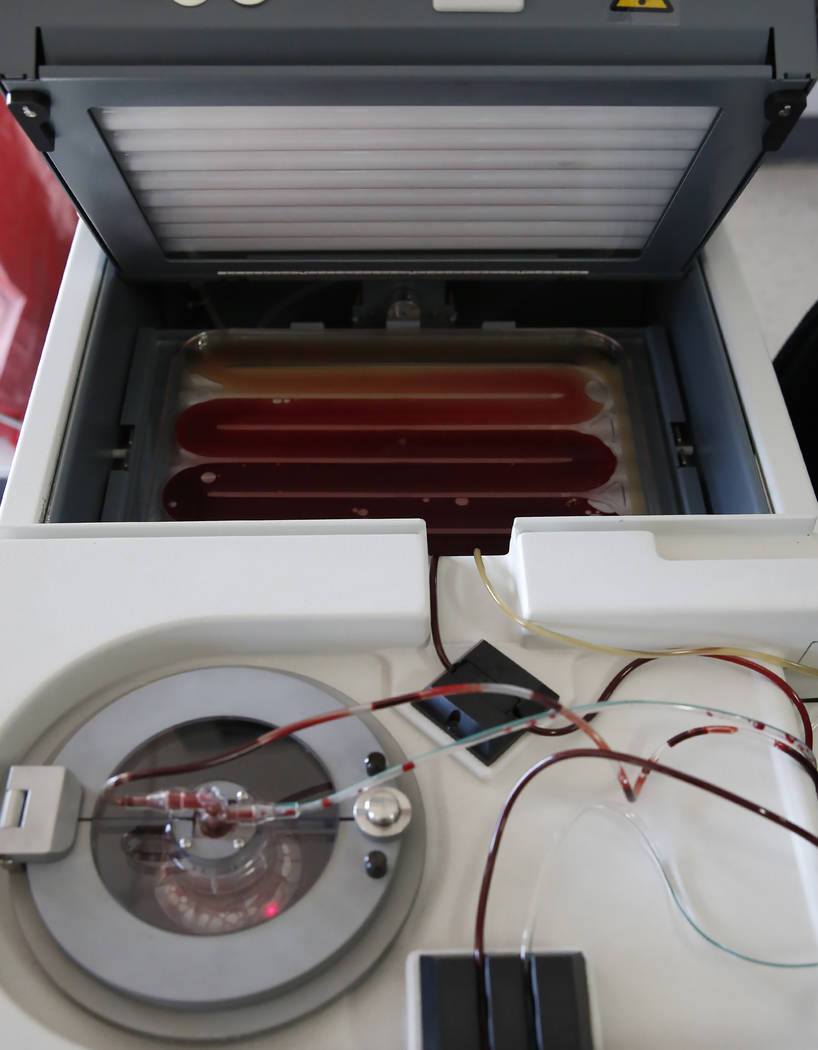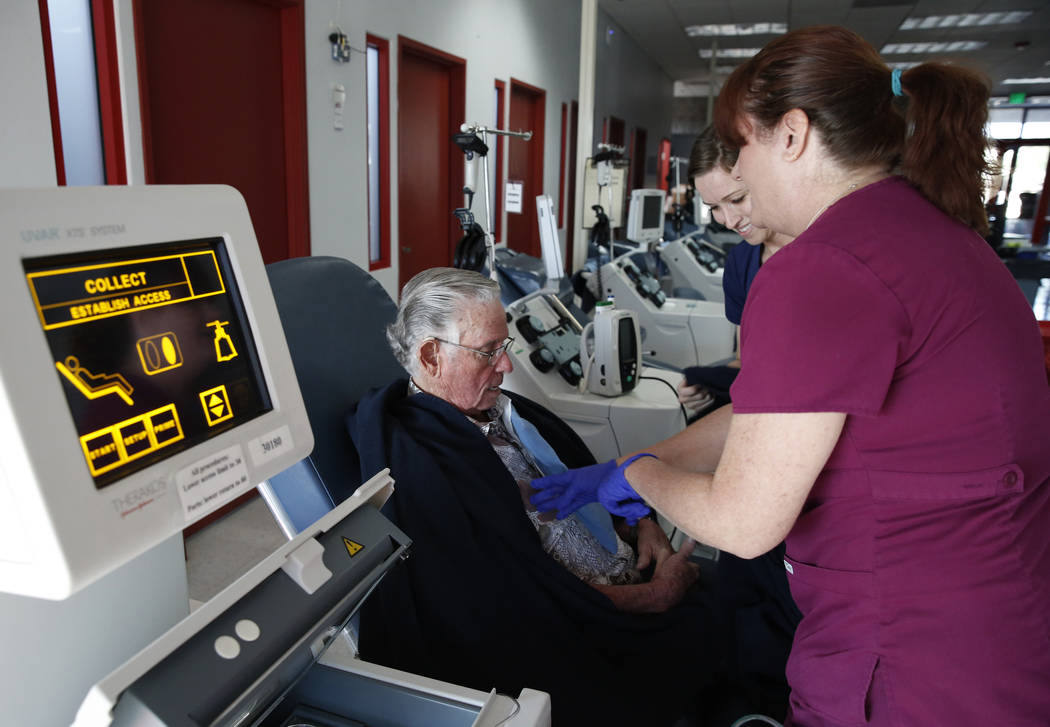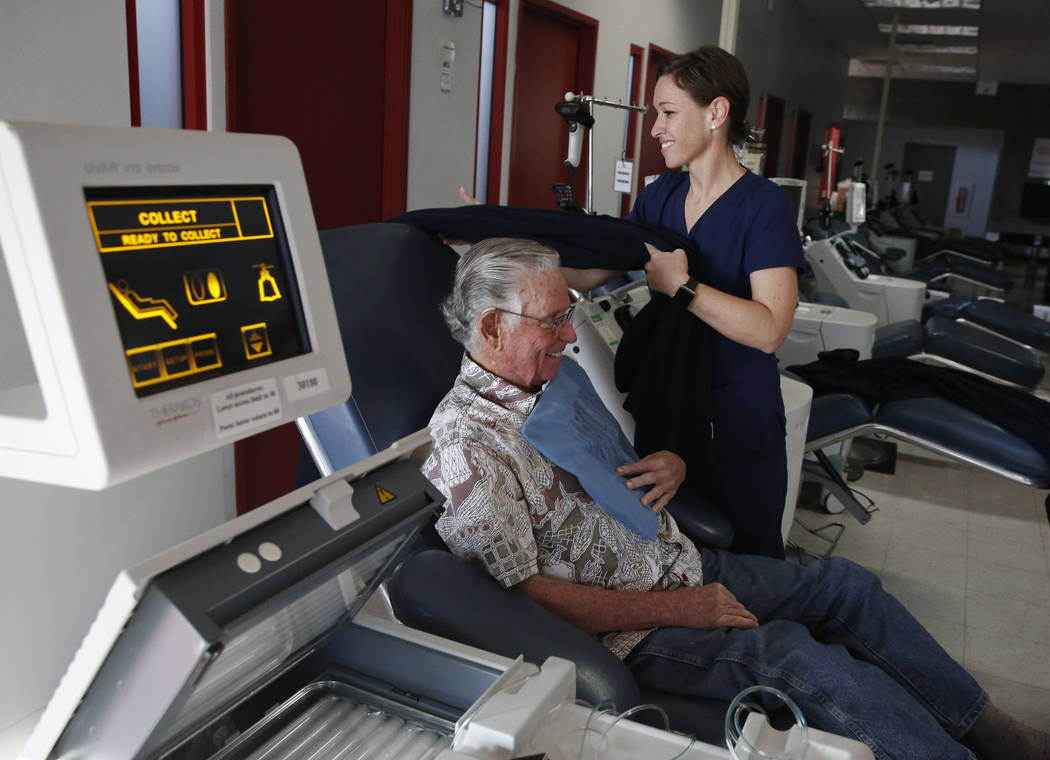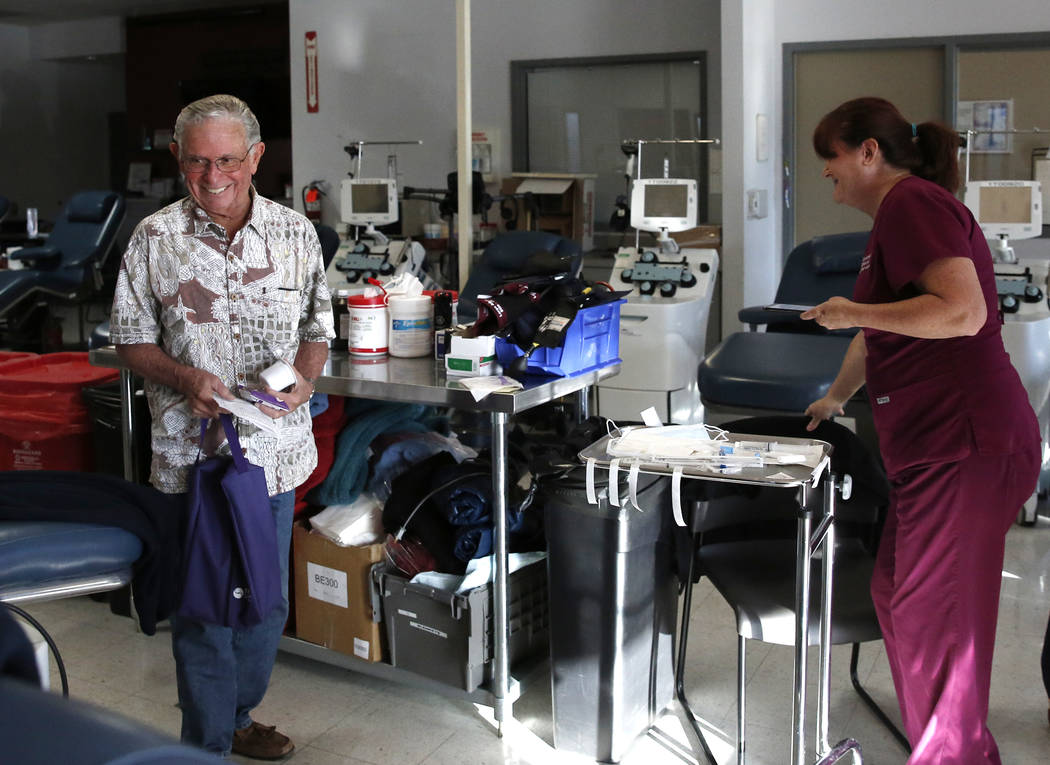T-cell lymphoma treatment a first for Nevada
It starts with a burning sensation buried deep under the skin. Maybe on the inside of his arms, or on his chest.
But before he knows it, Larry Loman is rubbing his back against the wall or scratching his scalp, lying awake at night from the constant distraction of the itch.
“When you’re busy during the day, I’m not itching. But when I’m relaxed, oh my gosh. There it goes,” said Loman, an 82-year-old jokester who was diagnosed with a rare form of cutaneous T-cell lymphoma called Sezary syndrome in January.
Until May, the recommended treatment, called photopheresis, for Loman’s slowly progressing cancer wasn’t available in Nevada. Though the therapy is three decades old, the rarity of Sezary — about 450 Americans are diagnosed annually, according to the Cutaneous Lymphoma Foundation — made it difficult for doctors to convince hospitals that the investment in the machinery would be worthwhile.
Enter, Loman. The tennis enthusiast had been dealing with itchy, tomato-red skin for four or five years, but never sought help.
“The first-line option is photopheresis,” said Vikas Gupta, Loman’s doctor and a hematologist and oncologist with HealthCare Partners Nevada.
He suggested Loman move back to Los Angeles, where he’d spent most of his life. Loman wasn’t keen on the idea.
“I was kind of kidding with my doctor and said, ‘Hey, have you driven over there lately? I don’t want to move there.’”
So Gupta called Marissa Li, medical director for United Blood Services who is based in Los Angeles, and asked for a favor.
“She said, ‘If we have a need, we’ll get it,’ ” he said. “And within a few weeks, we were up-and-running.”
United Blood Services bought the machine for about $100,000. Most insurance plans cover the treatment.
Cutaneous T-cell lymphoma is a blood cancer involving the skin. Common symptoms include itching, rash, dry skin and enlarged lymph nodes, according to the Lymphoma Research Foundation.
In Loman’s case, the cancer spread beneath the skin into the bone marrow, making treatments to the skin’s surface ineffective.
For three-and-a-half years, Loman got the wrong treatment. His blood work indicated Loman had leukemia, and the itching wasn’t quite as pronounced at the time, so doctors fed him chemotherapeutic pills, which could have damaged his organs in the long run, Li said.
Photopheresis, on the other hand, comes with limited side effects, like nausea, increased redness for up to 8 hours after treatment and dizziness.
Basically, nurses connect a blood draw from a chest port to a machine. The machine separates a patient’s white blood cells from the red and treats the white blood cells with a light-sensitive medication.
Then, those white blood cells go into what nurses call the “tanning booth” — a bed of ultraviolet light that kills off diseased cells — and the blood is returned to the patient.
The process takes about three hours, is conducted twice over two, back-to-back days, and is repeated at a frequency based on the patient’s condition — every three weeks for Loman.
Loman sat with his polo shirt unbuttoned and gauze covering his chest port on a recent Wednesday morning, prepping for his 20th photopheresis treatment at the United Blood Services on Charleston Boulevard. He drank an Ocean Spray cranberry juice and ate an oatmeal cookie — though he would’ve preferred an Oreo.
“He’s the best first patient,” said Mindi Johnson, nurse manager at UBS. To be fair, he said he’d do just about anything to make the itch go away.
“Hang me upside-down, (as) long as it works,” Loman joked. “Just let me down easy.”
The itching hasn’t subsided yet, but the redness has, so Li is hopeful the itch will follow.
When it does, Loman, would like to travel — to visit his daughter in Dallas or his son in Los Angeles.
“But I need to relieve the annoying symptoms. I’m not going to give up on it,” Loman said.
Contact Jessie Bekker at jbekker@reviewjournal.com or 702-380-4563. Follow @jessiebekks on Twitter.
HealthCare Partners Nevada seeking patients
HealthCare Partners Nevada is accepting patients who think they may have cutaneous T-cell lymphoma and would benefit from photopheresis treatment.
Those interested can call 702-228-1111 and talk to an on-call nurse for more information.



